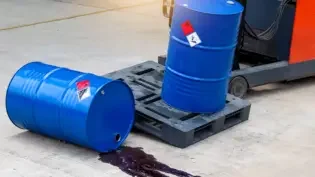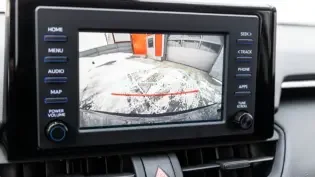3 Brake Issues You Shouldn’t Ignore in Fleet Vehicles
By: Dan Coconate

When it comes to fleet vehicle management, safety should always be a top priority. You depend on your vehicles to help your staff travel safely and reach clients in a timely manner. Ignoring brake issues in your fleet vehicles can lead to costly repairs, operational delays, and most importantly, safety hazards. Below, we’ll explore a few key brake issues you should never ignore in fleet vehicles and why addressing them promptly makes all the difference.
Soft or Spongy Brake Pedal
If your drivers report that the brake pedal feels soft or spongy, it’s time to take immediate action. This issue can feel like the pedal “sinks” under pressure, requiring more effort to stop the vehicle. While there are many potential causes of a soft brake pedal, it is a very serious issue that you need to deal with immediately.
Ignoring this problem can escalate into a situation where the brakes fail completely, putting both your driver and others on the road in danger. A quick inspection can reveal the underlying issue, allowing you to resolve it before it affects performance or safety.
Squealing or Grinding Noises
One of the easiest-to-detect issues is the high-pitched squealing or harsh grinding noise coming from the brakes. Squealing often signals worn-down brake pads, while grinding typically means the backing plate is making contact with the rotor. These noises act as early warning systems for deeper brake problems.
Addressing worn pads quickly prevents rotor damage, keeping repair costs down and ensuring smooth braking. Proactively checking for wear and tear reduces vehicle downtime, allowing operations to continue without disruption.
Vehicle Pulling to One Side
A vehicle that pulls to one side when braking can be both dangerous and an efficiency killer. Drivers may find they need to overcorrect when this happens, which can become a serious hazard, especially in busy traffic. This issue often occurs because of uneven brake pad wear, a stuck caliper, or even a fluid imbalance within the braking system.
Resolving this problem promptly improves safety for drivers and also ensures tires and brakes wear evenly. This promptness can reduce maintenance costs in the long run while maintaining driver confidence.
Stay Ahead With Regular Inspections
By understanding the brake issues you shouldn’t ignore, you can maintain safety in your fleet vehicles. After all, these vehicles directly impact your team’s ability to operate efficiently while reducing long-term repair expenses. Scheduling regular brake inspections keeps your fleet running smoothly and minimizes unexpected breakdowns.
Don’t wait for a small brake issue to snowball into a costly problem. Act today to ensure your fleet is safe, reliable, and ready to roll.
36 Views












